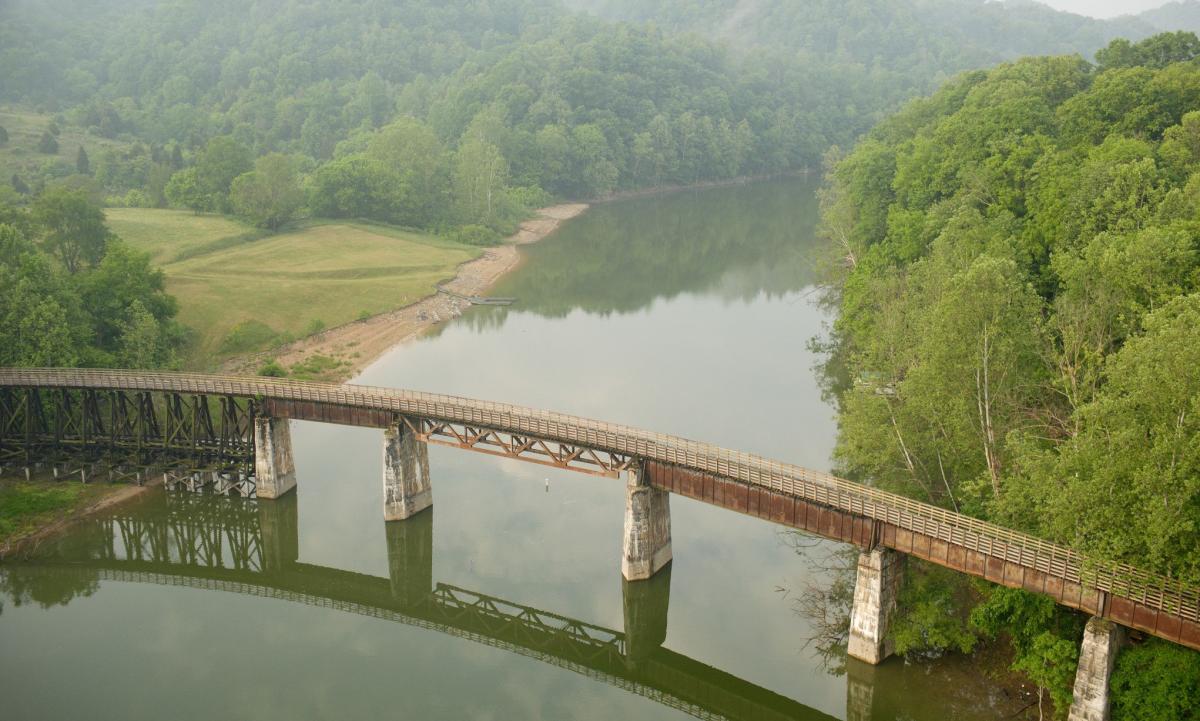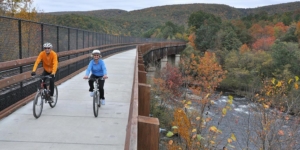Federal programs that have been significantly enhanced are now responsible for hundreds of new projects called ‘rail to trail’ initiatives throughout the U.S.
Congress authorized billions of dollars to support multi-use trails and other kinds of non-motorized transportation projects and the funding is now flowing through the Federal Highway Administration. In fact, the distribution is at an annual average of $1.44 billion and the revenue is going to state governments. The funds, however, are designated for local projects that provide benefits to communities that surround public transit hubs. Congress approved the money to alleviate vehicle traffic congestion on roadways, provide pedestrian safety, improve mobility for underserved communities and create economic vitality.
In February of this year, the first round of $5 billion in funding came through the Safe Streets and Roads program and 46% of the grants were allocated to projects for bicycle and pedestrian corridors, including many rail to trail projects. Because rail trails promote safety and revitalize abandoned infrastructure assets, the federal government now identifies these projects as “essential infrastructure” investments.
The California Transportation Commission awarded over $1 billion to 93 active transportation projects—many of which are categorized as rail-to-trail efforts. One of the projects, the Coastal Rail Trail, received the largest active transportation grant in state history. The grant award exceeded $100 million, and the funding will be used to enhance four new segments of the Coastal Rail Trail in the county of Santa Cruz. This initiative, still in its infancy, will offer numerous types of contracting opportunities.
Voters in the city of Austin, Texas, approved a $460 million bond issue for active transportation projects and one project is a proposed urban rail trail in the burgeoning East Austin neighborhood. A $1 million federal earmark for the project’s preliminary planning stage allows the city’s public works division to finalize a design plan that will include 1.5 miles of multi-use trail along a section of rail line formerly used by the Missouri-Kansas-Texas (MoKan) Railroad. Input from citizens and community leaders is currently being accepted.
Local officials in Starkville, Miss., are partnering with a nonprofit organization to launch a multi-million dollar project to convert an out-of-service rail line into a regional trail network. The partnership, called the C&G Rail Trail Coalition, will oversee the effort to re-purpose 92 miles of disused railway tracks between the Mississippi cities of Greenwood and West Point. The rail line will be converted into a multi-use trail to benefit six counties. One portion of the project that involves work around the city of Starkville carries a $30 million price tag for construction costs. This component of the project will be scoped to provide recreational fitness opportunities, a venue for events and an alternative means of transportation for students at Mississippi State University.
Florida’s Department of Transportation has oversight responsibility for a multi-phased regional trail project that will span several counties between the Gulf and Atlantic coastlines. Construction will begin early in 2024 and exceed a cost of $20 million. Once completed, the regional effort will integrate with a statewide trail network being developed by Florida Greenways and Trails. The plan is contingent on repurposing disused rail tracks, especially in densely populated urban communities where mobility is strained by disinvestment and neglect.
After being abandoned in 2017, a 63.2-mile stretch of railway in southern Indiana has been designated as a source of newfound economic opportunity for the region. Plans are underway to convert the former rail line into a trail that will originate in the city of New Albany and extend across five counties in southern Indiana. Funding for the project, which has an estimated $50 million price tag, was announced by the governor during a 2023 State of the State Address. Once completed, the Monon South Trail will benefit 440,000 Indiana residents that live within 10 miles of the proposed route.
Several state agencies in Virginia are partnering on a project to convert over 48 miles of inactive Norfolk Southern rail lines into a major alternative transportation trail network for the Shenandoah Valley region. The initiative will be designed to convert segments of an inactive rail line into a trail network for the counties of Rockingham, Shenandoah and Warren. A pre-inflation price tag in the range of $72 million to $78 million was announced but current inflation rates could increase that estimate to approximately $86 million.
These examples of rail-to-trail projects can be found in almost all states and the contracting opportunities are diverse and abundant. The grant funding programs are set up to span several years.








